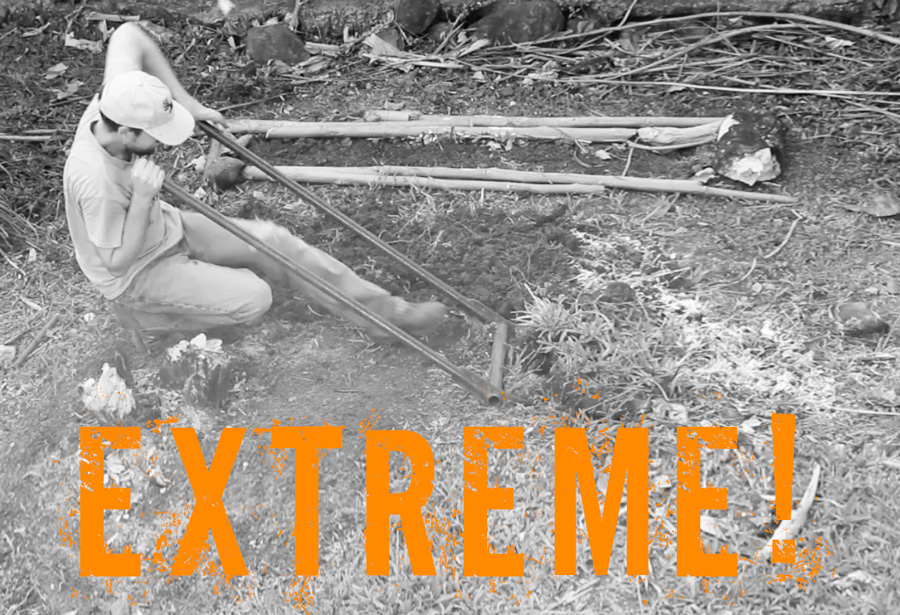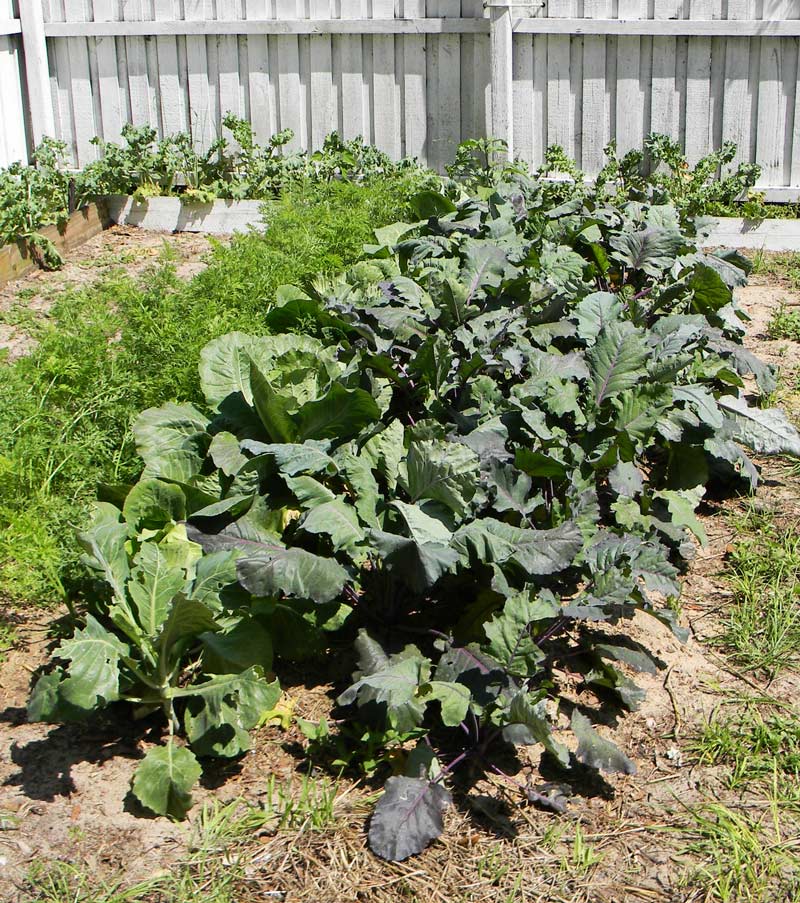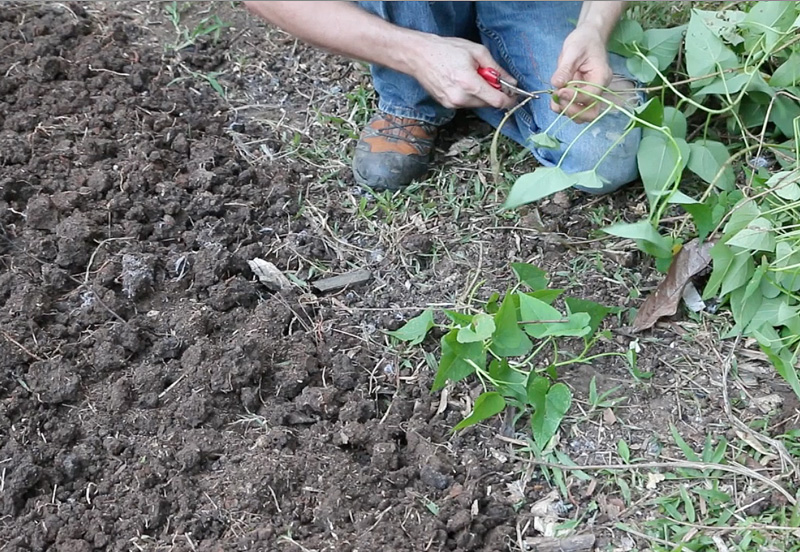Planting a bed of sweet potatoes is easy.
Preparing a bed for sweet potatoes is a little harder. That takes some digging and loosening.
Fortunately, my trusty Meadow Creature broadfork is always up to the task.
Digging in sandy soil with a broadfork is easy. In rocky clay, it’s not nearly as easy. It’s basically an extreme sport in clay.

It’s not impossible, though. That bed took me perhaps 45 minutes to prepare, mostly because it takes more stomping on the broadfork than I’m used to, plus I had to bust up the big clods.
Sure, it’s work – but it’s work that needs to be done, especially for root crops.
Why Dig a Garden Bed?
The major reason: loose soil. If the soil structure is open and crumbly, plant roots do a lot better. They can dig deep and get the minerals and water they need without having to force their way through hard earth. You’re doing the hard work first to make their lives easier.
Digging garden beds even works well in sand, as I discovered back in Florida.

When your plants have easier lives, they’ll spend more time making delicious things for you to eat.
The Initial Feeding
When I prepare a garden bed I rake in compost right at the beginning. In the past I’ve also used amendments such as lime, blood meal, bone meal, cottonseed meal and kelp meal – all of which are excellent additions to the soil.
Here, though, I can’t get most of those things, so I stick to compost, biochar and sometimes seaweed.
You can see a recent bit of bed prep in this video:
You don’t need a ton of organic matter in the soil. A few percent is fine. I sprinkle perhaps a half-inch cover of compost on a newly dug garden bed and rake or turn it in before I plant. The plants really appreciate compost and it lasts longer and releases its nutrition over time, unlike chemical fertilizer.
When preparing this garden bed I used my Back to Eden chicken run compost, which is probably hotter than compost from a typical backyard pile. The plants don’t seem to mind, though.
Here’s how I made that compost:
Simple.
Planting a Bed of Sweet Potatoes
This is easy as shoo-fly pie.
Just cut some vines and stick them in.

You can start your own sweet potato slips with store-bought sweet potatoes if you don’t have any vines currently growing on your homestead.
Use the toothpicks and a jar method – or – even easier – start potatoes growing by burying them shallowly in a pot of soil, then cut vines off of those to plant.
I use a stick to dig holes, then plant the sweet potato cuttings a few inches deep into them.
They’ll look like they’re going to die for a few days, then they’ll recover as the vines root. Sweet potatoes are tough.
For more on growing sweet potatoes in Florida and why they’re one of my top crops for the Sunshine State, check out my book Totally Crazy Easy Florida Gardening.
For more on sweet potatoes as a survival crop, plus an in-depth look at various garden designs and their pros and cons, get my book Grow or Die: The Good Guide to Survival Gardening.
I’ll post a video update on this bed soon – you’ll be amazed by how good these little pieces of vine look after a week or two.
Planting a bed of sweet potatoes takes some prep work, but do that preparation well and you’ll be rewarded with abundant harvests.


4 comments
I took a break from growing sweet potatoes last year to try and break a sweet potato weevil pest cycle. One of our neighbors grows “ornamental” sweet potato on her yard as a creeping ground cover and I’m sure she’s the reason why we have so many weevils. I’ve learned that sweet potato weevils prefer orange-fleshed sweet potatoes over boniato and other white-fleshed varieties, so I’m going to start some different white-fleshed varieties and see what works best.
Interesting. I noticed the same in my food forest sweet potato growing. The orange ones had more problems.
Happened on your site tonight. Old post I see, but I think you will like my sweet potato bed story, from when I lived in Oklahoma where the soil is solid red clay.
I lived on a street in Oklahoma City where one day the water company came and dug a neat rectangular chunk out of the “sidewalk strip” of grass in between the sidewalk and the street in front of each house. They did their work and left a big pile of dirt by each hole. I ran out and bought sweet potato slips, filled the hole back up with compost and and a little of the clay, and planted.
The following week I saw that the water company had sent a team back to put the dirt back in each hole and replace the grass with a square of sod. (Same type of sod for each house, no matter what grass had been there originally.) I had to go to work long before they got to my house, but I lay down a rope around my planting area and stuck up a little sign on a paper plate on a stick asking the workers to please plant grass only outside the line. (In Spanish. The workers were Spanish speaking.)
The workers must have respected my efforts. They even edged the grass they lay down.
It was a searing drought year summer.
Come fall, my bed was FULL of sweet potatoes, the largest as big as a small human.
All thanks to the water company. :)
I love it!
Comments are closed.